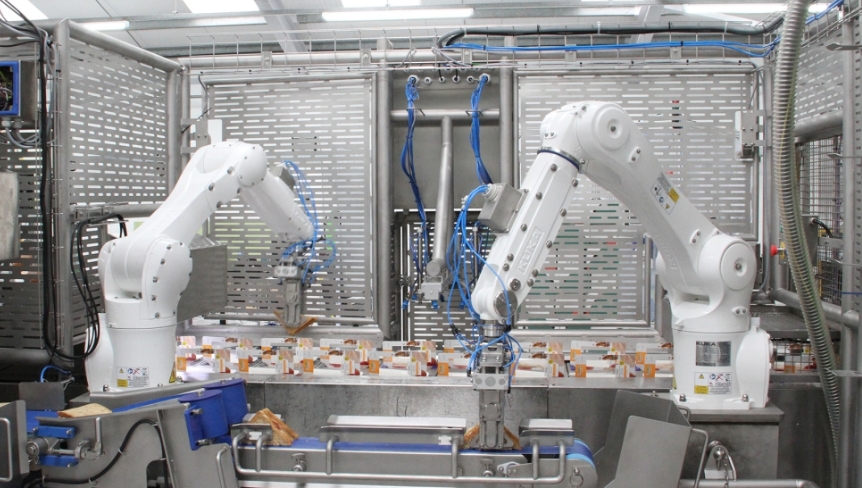Automated packaging in the food industry
2023-10-22

The packaging industry has experienced steady growth over the past few decades, driven by the demand for efficient and attractive solutions for product packaging. In this context, robotic automation has emerged as a key factor in improving efficiency, quality, and precision in packaging processes. photo Robots have proven to be versatile and adaptable tools that can perform tasks from assembly and labeling to final packaging. They have become indispensable in the packaging industry due to their ability to perform repetitive and precise tasks at high speed and quality. They are replacing workers who end their shifts very tired, reduce costs, and increase productivity.
Here we can see a success story of a Kuka robot specialized in packing sandwiches in plastic bags.
The food industry, during the last few years and the pandemic, has suffered from a shortage of personnel specializing in assembly line processes. Therefore, there has been a great need for simplification and automation of some processes, such as packaging.
In this case, the possibility of automating sandwich packaging through a robotic application was identified. Active8 employees built a facility using 3D printing that represented the automated scenario. This way, any important requirement, for example in terms of speed and hygiene, could be checked.
To continue with the application, they opted for two Kuka KR Agilus HM robots, due to their features; robust construction, they offer maximum repeatability and continuous precision.
The two KR Agilus HMs were equipped with end of arm rotation tools made of food-grade stainless steel to meet the strict hygienic standards in the food packaging sector.

This is how the application works
Bread seasoned by people is transported on a production chain. Before reaching the two KR Agilus HMs, the sandwiches are cut with ultrasound. The image sensors integrated into the facility control quality. If one of the sandwiches does not pass this quality control, it is removed. The triangular sandwiches are transported through the chain to the gripping arms of the KR Agilus HM. These take the seasoned bread, rotate it 180 degrees, and place it one by one in kraft paper bags. Ready for a snack.
Thanks to this new application, productivity is significantly increased. The two KR Agilus HMs can pack between 50 and 60 sandwiches per minute. “Thanks to the permanent lubrication of its gears, the KR Agilus HM does not need lubricant changes and requires minimal maintenance,” explains Michael Payne of Kuka. In a very short time, the investment pays off for the company: Thanks to stable productivity, lower costs, and high product quality, a return on investment can be achieved in approx. 16 months, depending on the size of the company and efficacy. Productivity can be further increased by adding more machines and production and packaging facilities.
Currently, the first robotic sandwich packaging installation of Active8 Robots is still awaiting its first application in an industrial bakery. To further assist customers in the production and packaging of sandwiches, in the future, the first part of the process could also be automated, that is, seasoning and folding the sandwiches.
The KR Delta could take on this task, as it has been designed for direct contact with food and can be integrated into the existing installation. Active8 Robots sees a great potential for applications in similar facilities with robots for handling food, such as packaging robots, which can hygienically, quickly, and economically package fruits, bakery products or other foods.
In summary, the success case of the sandwiches in the implementation of robots in packaging proves how technology can effectively be used to optimize processes, improving efficiency and quality of customer service.




